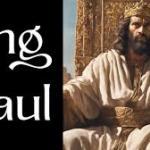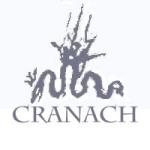In my earlier book entitled The Living Word of God, (Baylor Press) I spent time talking about how to choose a translation, based on part on who the audience is that will be using it, and what the function of the translation is. Is it for reading from the pulpit or lectern, is it for private devotion, is it for serious study of the Bible, or just an ordinary Bible study with laity (e.g. BSF)? Those are proper questions, but in this post and the next I want to interact with the preface to part of Robert Alter’s landmark series of translations of the OT, in this case on Genesis which came out in 1996. You can now get the same translation as part of an omnibus translation of the whole Pentateuch (and the alert reader will want to go back and read my review of Alter’s translation of the Psalms from a few months ago).
Right from the outset Alter points to one of the major problems with modern translations of the OT. “the problem is a shaky sense of English, and in the case of the King James, a shaky sense of Hebrew.” (p. i x). He’s right about this. Most modern translations of the OT are done by experts in Hebrew who are absolutely not experts in English language and literature. Their own writing styles, if sampled, are academic, or even if lay friendly they simply do not have a good command of the English language, including a good command of the various possibilities for rendering a particular text from the OT. Too often, they check all the previous recent English translations and become too impressed with the weight of the traditional, going all the way back to the King James. Ironically, the King James itself was deeply indebted to William Tyndale, Coverdale, and other previous English translation, and especially to Tyndale for memorable English phrases like ‘am I my brother’s keeper’, or ‘the spirit is willing but the flesh is weak’. Alter seeks to balance “the semantic nuances and the lively orchestration of literary effects of the Hebrew, and at the same time has stylistic and rhythmic integrity as literary English” (IBID).
Alter reminds us of the old adage, every translation is always a betrayal, and he says that modern English translation are especially guilty of this sin. He is particularly concerned with the rendering of the narrative prose of the Hebrew text which he says “have placed the reader at a grotesque distance from the distinct literary experience of the Bible in its original language” (p. x). Ironically, it is the King James that does the best job of rendering the original in a literary fashion that gives a good sense of the original literary effect of the text “despite its frequent its frequent and embarrassing inaccuracies, despite its archaisms, and despite its insistent substitution of Renaissance English tonalities for biblical ones” (p. x). I suppose we must partially blame the influence of the dominant English literature of the period. (i.e. Shakespeare and Marlowe and the Book of Common Prayer).
Alter suggests that a major part of the problem is the sub-field of Biblical philology at the expense of the Bible as literature, especially in the case of prose narrative. Biblical philologists try to adhere carefully to the lexicons, understandably so, for a sense of the range of meaning of a word or phrase, and the underlying dictum seems to be ‘perspicuity is chiefest virtue of a style’ an idea that goes all the way back to Aristotle’s Rhetoric (book 3 chapter 2), and became a mantra in English literature even before the King James version was attempted. But in fact the the Biblical writers or Hebrew love word play, are deliberately ambiguous at times, meaning to tease the audience into active thought. In other words, they are not attempting to dumb down their message, or put the cookies on the bottom shelf, unlike many modern English translations. Alter laments “the philologist, however acutely trained in that discipline, has an underdeveloped sense of literary diction, rhythm, and the use of figurative language. The unacknowledged heresy underlying most modern English versions of the Bible is the use of translation as a vehicle for explaining the Bible instead of representing it in another language, and in the most egregious instances this amounts to explaining it away” (p. xii) The result of this is that often figurative or metaphorical prose, becomes very flat and mundane prose indeed, and this often happens in so-called more literal translations like the NASB. And the nuances of the text are lost in translation— not just the sound, the rhythm, the rhyme is lost, but the figurative and word play is lost.














